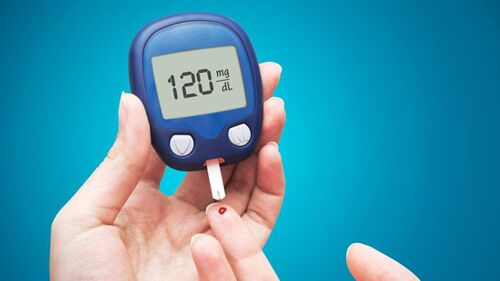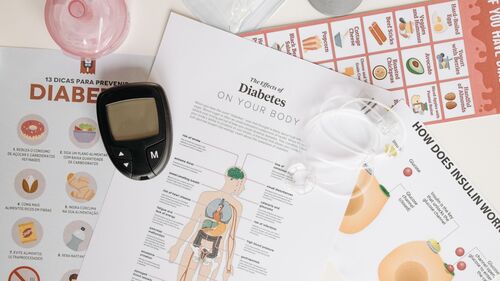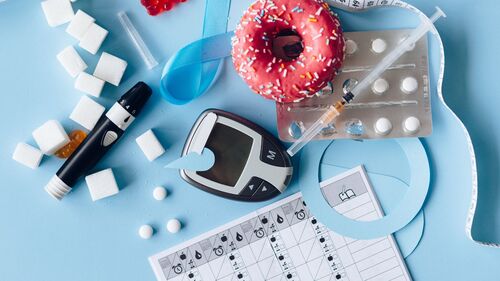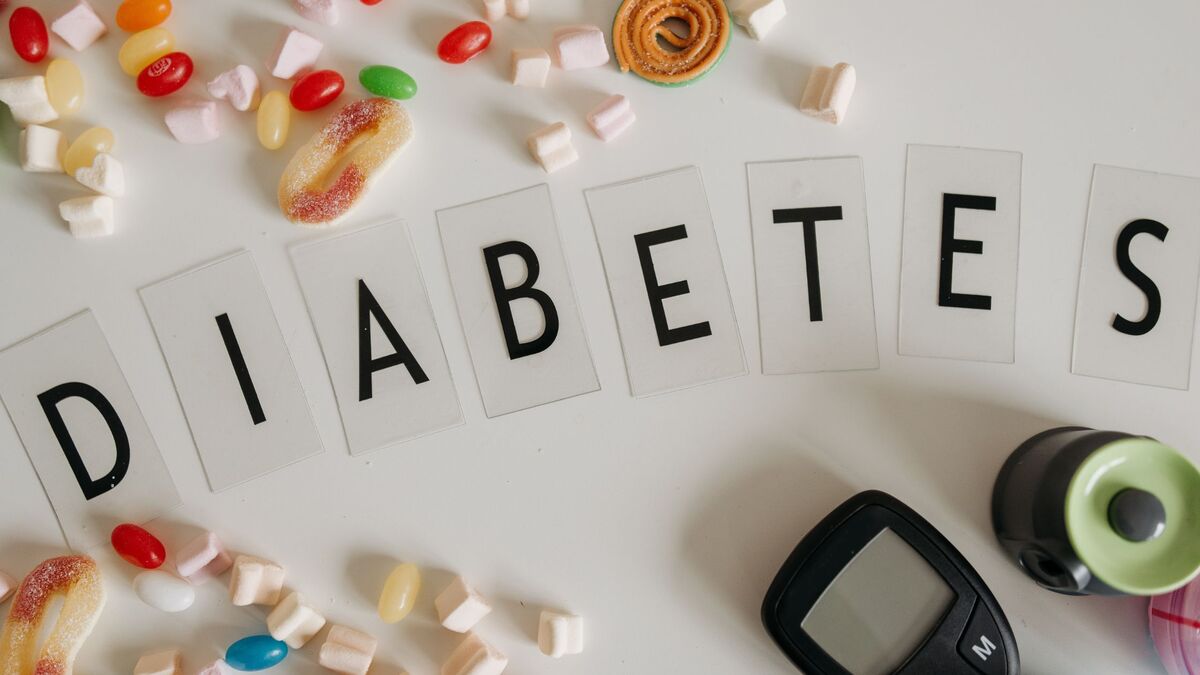Diabetes is a complex group of metabolic disorders characterized by high blood sugar levels (hyperglycemia) resulting from defects in insulin secretion, insulin action, or both.
Insulin, a hormone produced by the pancreas, plays a crucial role in regulating blood sugar levels by facilitating the uptake of glucose into cells for energy production. When this process is disrupted, it leads to various complications affecting multiple organ systems.
There are several types of diabetes, including Type 1 Diabetes, Type 2 Diabetes, gestational diabetes, and other less common forms. Type 1 Diabetes typically develops due to autoimmune destruction of insulin-producing beta cells in the pancreas, whereas Type 2 Diabetes is often associated with insulin resistance, where the body’s cells fail to respond adequately to insulin. Gestational diabetes occurs during pregnancy and usually resolves after childbirth.
Symptoms of diabetes may include increased thirst, frequent urination, unexplained weight loss, fatigue, blurred vision, and slow wound healing. Treatment for diabetes varies depending on the type and severity but often involves lifestyle modifications, such as healthy eating habits and regular exercise, along with medication or insulin therapy. Precautions for managing diabetes include monitoring blood sugar levels regularly, adhering to prescribed medications, maintaining a healthy weight, and avoiding smoking and excessive alcohol consumption. Despite advancements in treatment, diabetes remains a significant health challenge worldwide, affecting millions of individuals and posing a substantial burden on healthcare systems. How can individuals effectively manage and prevent complications associated with diabetes in their daily lives?
What Causes Diabetes Mellitus and How Does it Differ from Other Types?

Diabetes Mellitus, commonly referred to as just “diabetes,” is a metabolic disorder characterized by elevated blood sugar levels resulting from either insufficient insulin production, ineffective use of insulin, or both. Insulin, a hormone produced by the pancreas, regulates blood sugar levels by facilitating the uptake of glucose into cells for energy. When this process is disrupted, it leads to hyperglycemia, the hallmark feature of Diabetes Mellitus.
There are several subtypes of Diabetes Mellitus, including Type 1 Diabetes, Type 2 Diabetes, gestational diabetes, and other less common forms. Type 1 Diabetes typically develops in childhood or adolescence and is characterized by the autoimmune destruction of insulin-producing beta cells in the pancreas. On the other hand, Type 2 Diabetes, the most prevalent form, usually develops in adulthood and is often associated with insulin resistance, where the body’s cells fail to respond adequately to insulin.

Symptoms of Diabetes Mellitus may include increased thirst, frequent urination, unexplained weight loss, fatigue, blurred vision, and slow wound healing. If left untreated, it can lead to serious complications such as cardiovascular disease, kidney failure, nerve damage, and blindness.
Treatment for Diabetes Mellitus typically involves lifestyle modifications, such as dietary changes, regular exercise, monitoring blood sugar levels, and medication. In Type 1 Diabetes, insulin replacement therapy is essential, while Type 2 Diabetes may require oral medications, insulin injections, or other injectable medications to manage blood sugar levels effectively.
What is Diabetes Insipidus?

In contrast to diabetes mellitus, diabetes insipidus is a rare disorder characterized by excessive urination and extreme thirst. Despite sharing the term “diabetes,” diabetes insipidus is not related to blood sugar levels or insulin production. Instead, it is caused by a deficiency in, or a response failure to, the antidiuretic hormone (ADH), also known as vasopressin.
ADH is produced by the hypothalamus and stored in the pituitary gland. Its primary function is to regulate the body’s water balance by controlling the amount of water reabsorbed by the kidneys. In diabetes insipidus, either the production or action of ADH is impaired, leading to the excretion of large volumes of dilute urine.
There are several types of diabetes insipidus, including central diabetes insipidus, nephrogenic diabetes insipidus, gestational diabetes insipidus, and dipsogenic diabetes insipidus. Central diabetes insipidus occurs when there is a defect in the production or release of ADH, often due to damage to the hypothalamus or pituitary gland. Nephrogenic diabetes insipidus, on the other hand, results from the kidneys’ inability to respond to ADH, either due to genetic mutations or acquired conditions.
Symptoms of diabetes insipidus may include excessive thirst (polydipsia), excessive urination (polyuria), dehydration, and electrolyte imbalances. If left untreated, severe dehydration can occur, leading to life-threatening complications.

Treatment for diabetes insipidus aims to replace the deficient ADH or enhance the kidneys’ responsiveness to ADH. In central diabetes insipidus, synthetic forms of ADH, such as desmopressin, are administered either orally, nasally, or intravenously. In nephrogenic Diabetes Insipidus, treatment may involve addressing the underlying cause, adjusting medications, or using diuretics to reduce urine output.
How Can We Differentiate Diabetes Types?
In conclusion, diabetes encompasses a group of metabolic disorders characterized by elevated blood sugar levels, impacting millions of individuals worldwide. There are several types of diabetes, including type 1 diabetes, type 2 diabetes, gestational diabetes, and less common forms like diabetes insipidus. The causes of diabetes vary depending on the type but often involve factors such as genetics, lifestyle choices, and autoimmune responses.
Common symptoms include increased thirst, frequent urination, fatigue, blurred vision, and slow wound healing. Treatment typically involves a combination of lifestyle modifications, medication, and, in some cases, insulin therapy. However, prevention through healthy lifestyle choices, including a balanced diet and regular exercise, remains crucial. Regular monitoring of blood sugar levels and adherence to prescribed medications are essential to effectively manage the condition and prevent complications.
Among these considerations, one question arises: How can advancements in medical research and technology further improve the management and prognosis of diabetes for individuals worldwide?
FAQs:
Type 1 diabetes is primarily caused by an autoimmune response that destroys insulin-producing cells in the pancreas.
Type 2 diabetes typically develops in adulthood and is often associated with insulin resistance, while type 1 diabetes usually begins in childhood and involves autoimmune destruction of pancreatic cells.
Treatment involves lifestyle modifications, medication, and, in some cases, insulin therapy to manage blood sugar levels effectively.
Diagnosis typically involves urine and blood tests to measure urine concentration, hormone levels, and kidney function.
While type 1 diabetes cannot be prevented, type 2 diabetes can often be prevented or delayed through lifestyle changes such as maintaining a healthy diet, regular exercise, and weight management. Preventive measures for diabetes insipidus primarily focus on managing underlying conditions or factors contributing to the disorder.


I loved as much as youll receive carried out right here The sketch is tasteful your authored material stylish nonetheless you command get bought an nervousness over that you wish be delivering the following unwell unquestionably come more formerly again since exactly the same nearly a lot often inside case you shield this hike